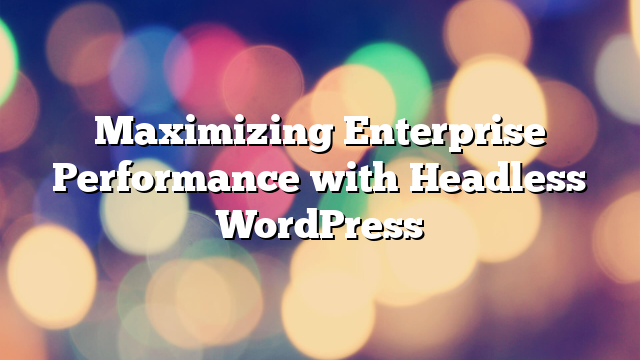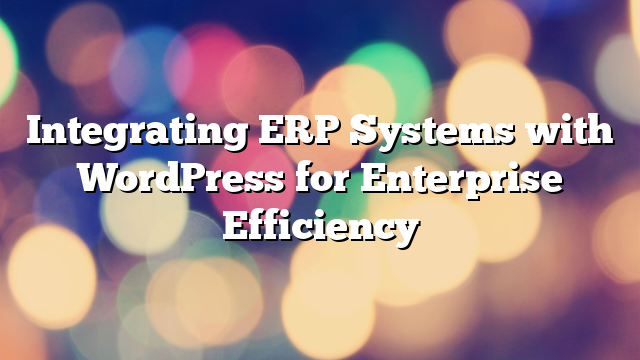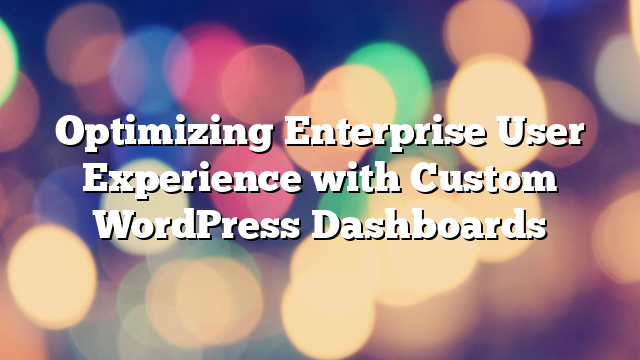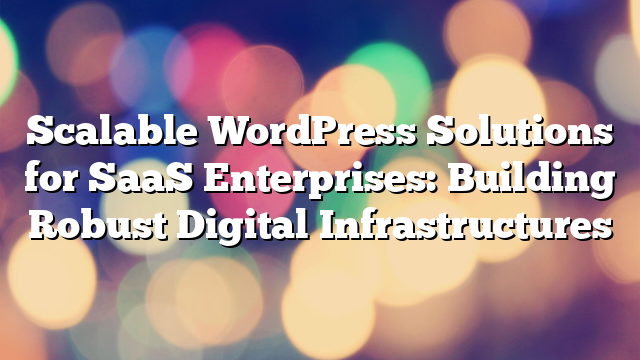Maximizing Enterprise Performance with Headless WordPress
17.02.2025

As enterprises demand faster, more scalable, and customizable digital experiences, traditional WordPress setups may fall short of expectations. Headless WordPress has emerged as a modern solution, separating the backend content management from the frontend presentation layer. This approach enables enterprises to deliver high-performance, multi-channel digital experiences while maintaining full control over content.
1. What is Headless WordPress?
Headless WordPress decouples the backend CMS from the frontend, allowing content to be delivered via APIs (typically REST API or GraphQL) to various platforms. Instead of relying on PHP-based themes, enterprises can use modern frontend frameworks such as Next.js, React, or Vue.js to build highly responsive and interactive user interfaces.
2. Improved Performance and Speed
By leveraging a headless architecture, enterprises can significantly enhance page load speed and performance. Traditional WordPress themes often come with unnecessary bloat, while headless setups allow for optimized, static-site generation and server-side rendering with frameworks like Next.js, ensuring lightning-fast load times.
3. Seamless Omnichannel Content Delivery
One of the biggest advantages of Headless WordPress is its ability to distribute content across multiple platforms. Whether it’s websites, mobile apps, IoT devices, or digital kiosks, enterprises can manage and deliver content from a single WordPress backend to any digital touchpoint.
4. Enhanced Security
By eliminating the direct connection between the frontend and WordPress backend, headless setups reduce common security risks such as brute-force attacks and unauthorized access to the WordPress admin panel. With the frontend hosted separately, enterprises can implement additional security layers, making it harder for attackers to exploit vulnerabilities.
5. Better Developer Experience and Flexibility
Headless WordPress offers enterprises complete flexibility in choosing frontend technologies, enabling development teams to work with modern stacks like React, Vue.js, or Angular. This flexibility improves the developer experience and ensures businesses stay ahead of technological advancements without being restricted by WordPress’s traditional theming system.
6. Scalability for Growing Businesses
Enterprises experiencing rapid growth require a scalable digital infrastructure. Headless WordPress enables businesses to scale frontend applications separately from the backend, ensuring smooth performance even under high traffic loads. Additionally, cloud-based hosting solutions and CDNs further optimize delivery for global audiences.
7. SEO and Headless WordPress
Contrary to the misconception that headless architectures hurt SEO, using frameworks like Next.js for static-site generation and server-side rendering improves SEO rankings. Enterprises can fully control metadata, structured data, and performance optimizations, ensuring a strong presence in search results.
Conclusion
For enterprises seeking to push digital experiences to the next level, Headless WordPress offers unparalleled speed, flexibility, security, and scalability. By embracing a decoupled architecture, businesses can future-proof their digital ecosystems and stay competitive in an ever-evolving market.
At AllWebDev, we specialize in Headless WordPress development and integration. Contact us to explore how we can transform your enterprise website with headless architecture.



